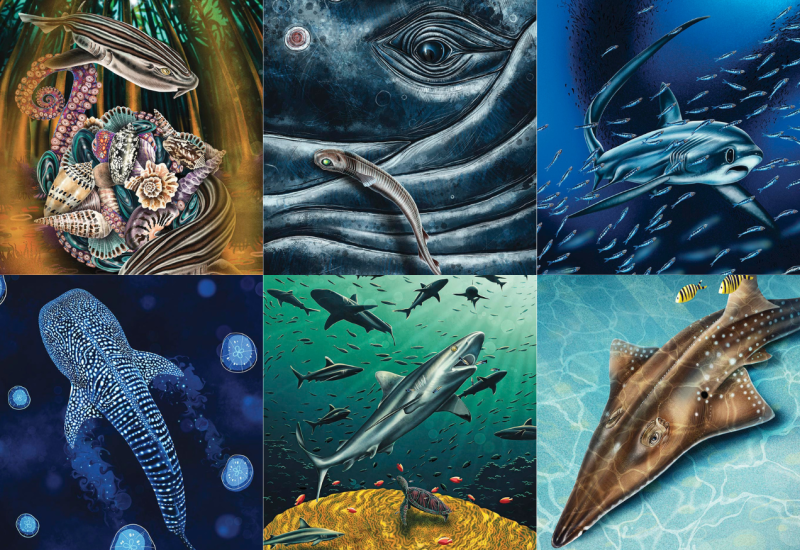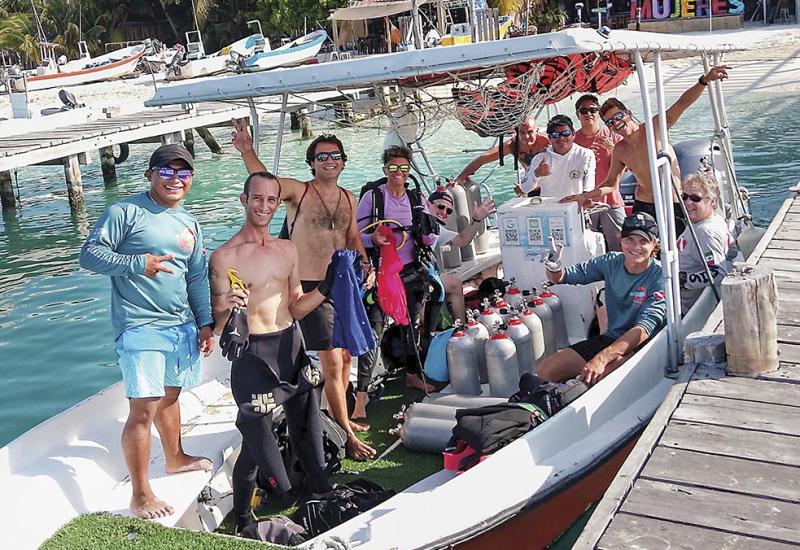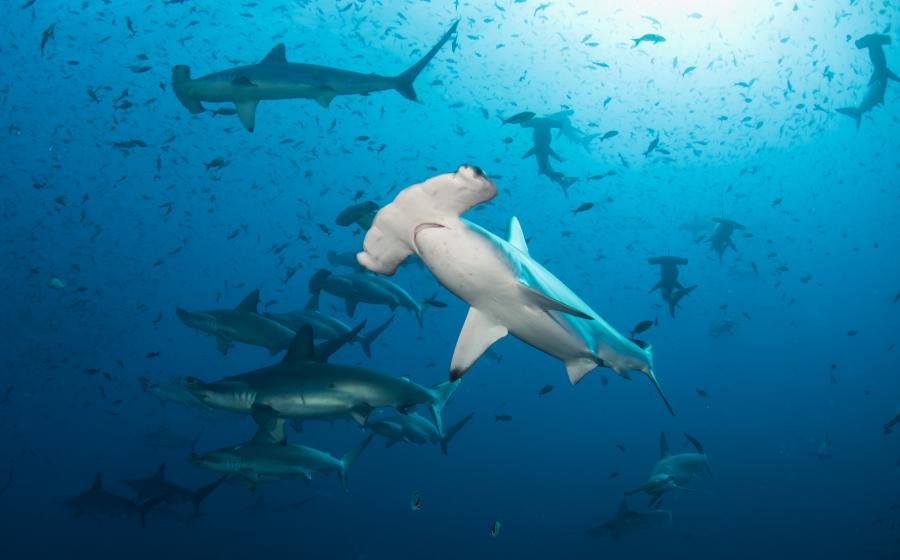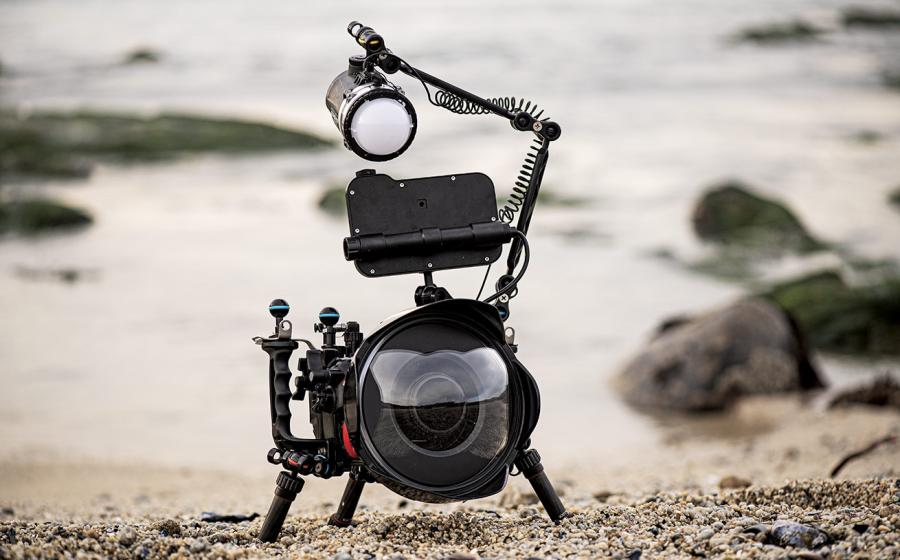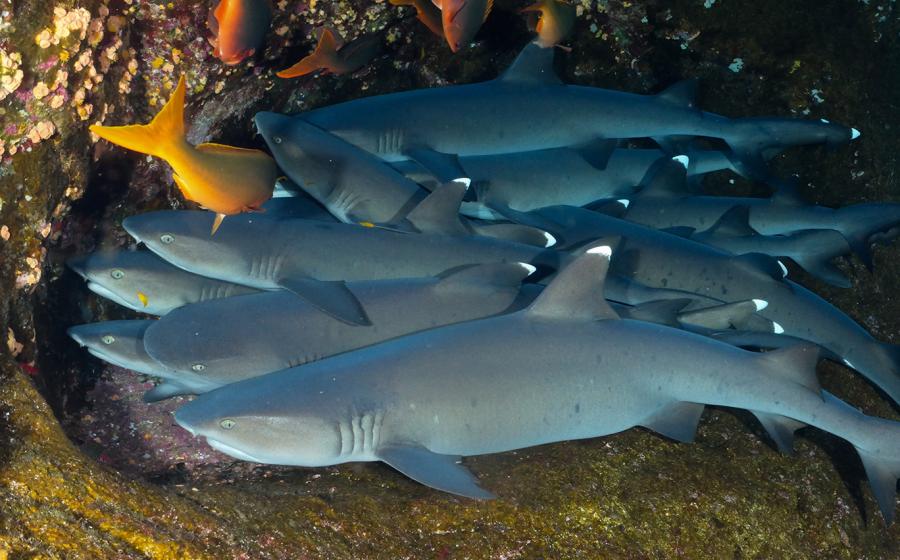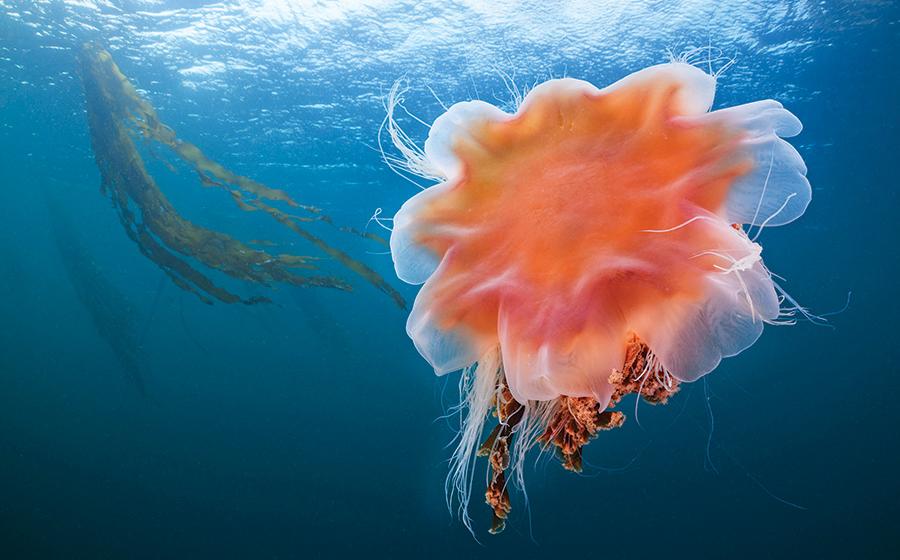Great White Shark Tagged Off Florida Coast Amid Surge in Sightings

Courtesy Annie GuttridgeScientists work to tag a great white shark off Jupiter, Florida.
It was just past midnight when a team of researchers from Saving the Blue, including Emily Spurgeon, a shark researcher for Saving the Blue and Florida International University (FIU), hauled in a line after a long and exhausting night of catching and tagging sharks. But as the 11-foot female juvenile great white shark broke the surface of the water, Spuergeon and others couldn’t believe their eyes. The massive predator—the first white shark ever caught and tagged off Jupiter’s coast—sent waves of excitement through the boat.
“It was one of those epic moments,” she says. The tension was high because everyone knew it was on the line, but it could still get away. Eventually, they secured her to the side of the boat. With precision and care, they took measurements, implanted an acoustic tag (to track her movements with sound), as well as a satellite tag and then released her back into the water. The team named her Dolores in honor of the captain’s mother who had recently passed.
For Spurgeon, who spent the last six years studying white sharks off the coast of California, it’s an exciting time. The movements of juvenile white sharks are still a bit of a mystery to scientists, she said. The acoustic tag, which will last 10 years, will provide valuable data well into the shark’s adulthood.
The tagging comes on the heels of several recent white shark sightings by scuba divers in South Florida.
PADI instructor Andrea Whitkaer, who works at Pura Vida Divers in South Florida, was thrilled when she spotted her first white shark on March 3 while diving at a 50-60 foot site offshore of Breaker’s Reef in Palm Beach. “There had already been several great white sightings in Palm Beach County this year. While I wasn’t expecting to see one, I was definitely hopeful that the odds were in my favor,” she says.
Related Reading: Swimming With Wild Dolphins: A Guide to Ethical Encounters
Adam Foglia, who works for Gung Ho Divers, also had the chance to witness a white shark for the first time while in Jupiter diving on March 19. “In my mind, I always played out what it would be like to see a great white in the water and I questioned myself on how I would react,” he says.
The divers descended upon the wreck, and he was making his way to the stern when he noticed a different-looking shark compared to the typical lemon and tiger sharks they had recently seen. “Immediately I knew it was a white shark,” he said. “Although I played many scenarios in my head about seeing a white shark, I was actually very calm and sat and admired its beauty.”
The increased sightings have left people wondering: Are there more white sharks in Florida, or are there simply more people noticing because of social media?
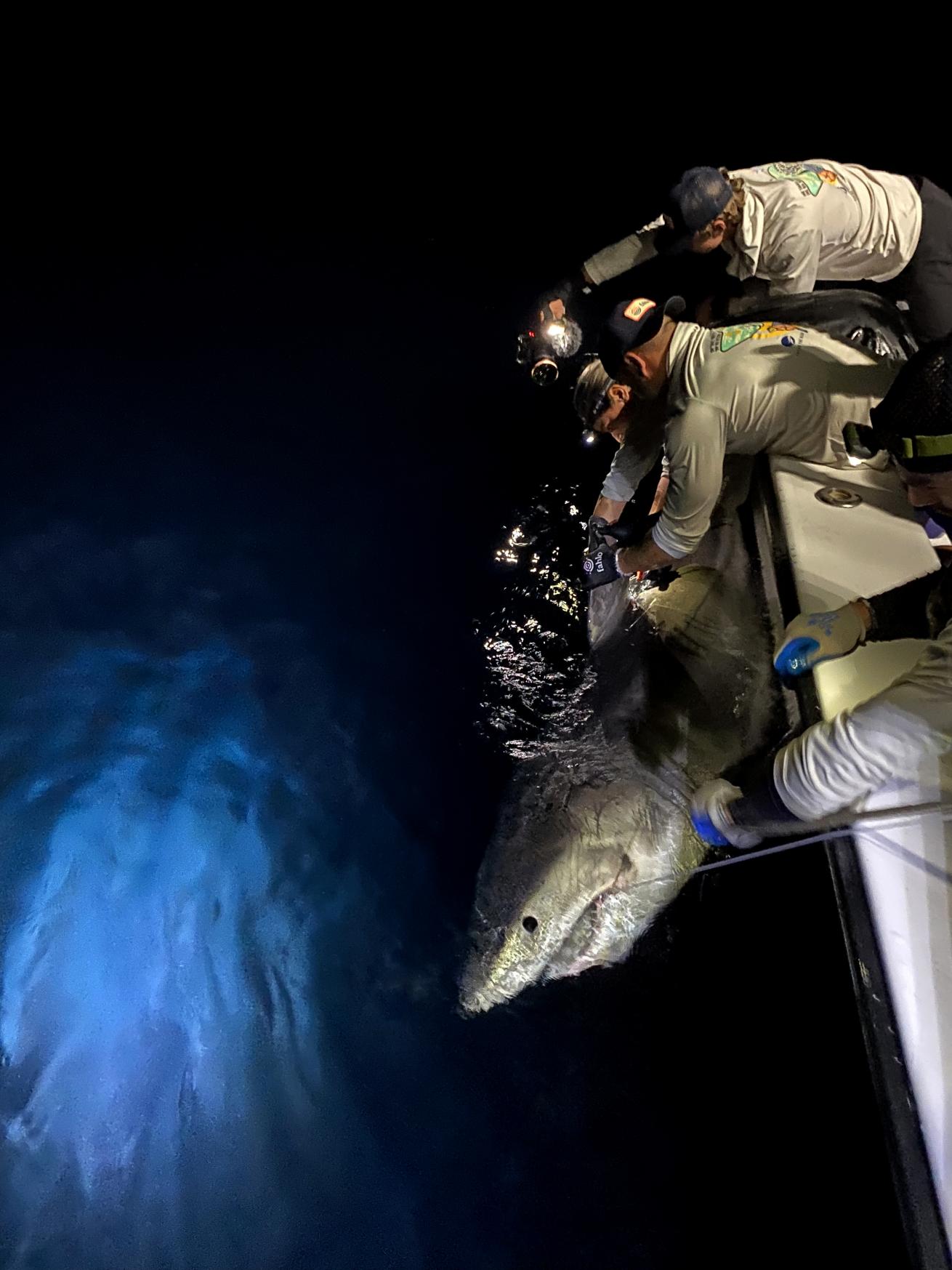
Courtesy Annie GuttridgeThis is the first time scientists have caught and tagged a great white shark off Jupiter, Florida.
Sighting Surges
Experts say it's likely a combination of both. While the surge in sightings can partly be attributed to increased awareness and the widespread sharing of shark encounters on social media, as well as increases in technology to help find them, like drones, there is also solid evidence suggesting that white populations are indeed growing.
Conservation efforts, like the Marine Mammal Protection Act, have allowed populations of seals and sea lions—key food sources for adult great whites—to rebound. Additional fishery protections in the 1990s, such as nearshore gillnet bans, have also helped, says Spurgeon. As a result, more sharks are thriving, and with the increased numbers, these sharks are also reproducing.
Juvenile great whites are particularly drawn to the state’s coastal waters, especially during the winter months, she says. These sharks, still growing, prefer water temperatures between 68 to 72 degrees Fahrenheit, which Florida’s waters provide during the colder months. “It’s a lot like people,” notes Spurgeon.
Related Reading: 8 Reasons to Learn to Dive in Florida
For those who might be intimidated by sharks in local waters, it’s not the occasional great white shark you need to worry about, says Michael Heithaus, Ph.D., a marine biologist and dean of the College of Arts, Sciences & Education at FIU. Great whites typically don’t venture close to shore.
They are very skilled at distinguishing between prey they want and don’t want—and they don’t want people, he says. “The majority of bites are likely from blacktip sharks and nurse sharks,” Heithaus says. Nurse sharks are often provoked by people harassing them, while blacktips are more likely to bite when they’re feeding on schools of fish or when surfers, divers or even people jumping into the water accidentally disturb them. If you’re still concerned, he suggests avoiding turbid waters and swimming near schools of bait fish.
“Hollywood has villainized an entire species of apex predators causing many people to fear the ocean and its inhabitants,” said Foglia. “ I only wish more people would go out on a respected dive charter and get in the water and experience sharks firsthand so they can get a better understanding of the species and maybe sway their opinion of sharks into a more positive and fascinating way.”



